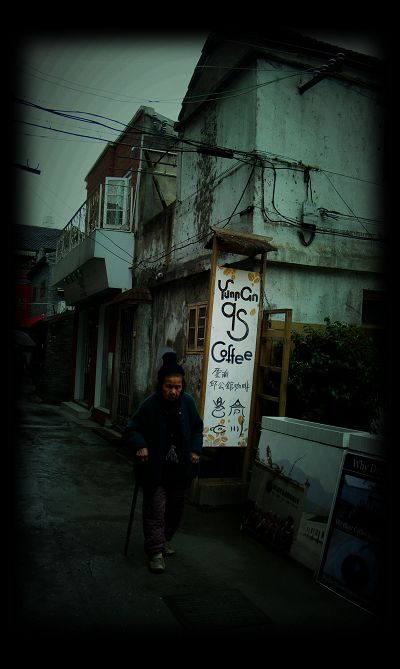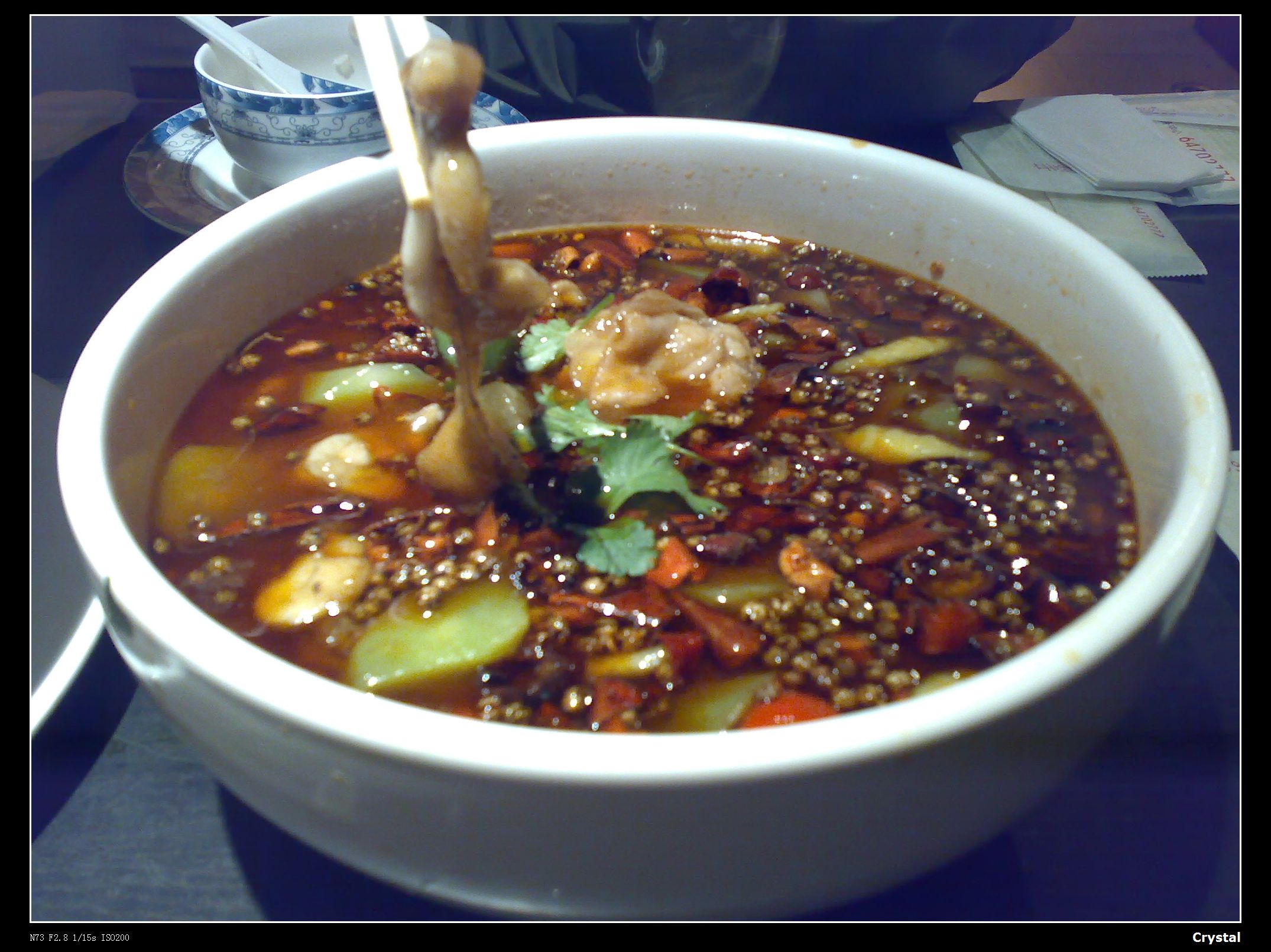Posted: March 31st, 2009 | Author: Xu Shengxi | Filed under: creative industries | Tags: Add new tag, cultural industry, design studio, loft, media | No Comments »
Shanghai Media Cultural Park is established in 2004 with the support of government in No. 1000 of Changping Road. Its building is use to be the space of Shanghai Window Hook Factory which was established in 1980s. Because of the economic reform of China the factory had to stop operating. The government spent about two years to transform it from old factory to industrial park through inviting investments, especially from overseas. Nowadays the old factory seems to be another loft in Shanghai and forms its own style which is different from Tianzi Fang and the No.8 Bridge. There are two industrial chains in this park; one is the chain that concludes production of film and TV. As the gatekeeper introduced that the park is one of the main place that pop stars to participate in shooting the advertisements. Another chain is including many famous billboard companies and design studios.
The gate of Shanghai Media and Cultural Park      (By Xu Shengxi)

The scutcheon

As the gatekeeper who was once the worker of shanghai window hook factory said the companies and studios which settled here rebuild the factory little in order to keep the original style.
The old building of the factory.



The pillar, railing and even the color of the wall have never been changed a lot.

The building looked so old outside but almost all the studios design their working place inside.


the old gate but now it is an studio named Join Art

the pictures showed in the building which produced by these companies

The imaginable introduction

The gatekeeper Mr. Xiao said the reuse of old factory provided many job to the laid-off worker of the former window hook factory and it also contributed to social security.
Posted: March 31st, 2009 | Author: Fu Hanqing | Filed under: creative industries | Tags: tian zi fang | No Comments »
Tian Zi Fang is located on the TaiKang Road, NO.210. Distinguished from other creative industry parks which artists spontaneously clustered in, Tian Zi Fang was firstly planned and constructed by government.
Tian Zi Fang, Tai Kang Road, NO.210 (from internet)
Old Lanes and New Stores 1 (by Fu Hanqing)
Old Lanes and New Stores 2 (by Fu Hanqing)
Direction Boards in Patio (by Cristal)
Recently, workshops and warehouses in the lanes nearly stamped out in Shanghai. However, in Tian Zi Fang, the traces of workshops and warehouses were kept in a new cultural formation. Shops and studios reconstructed from these workshops have brought the fashion and breath and art atmosphere to stone-ringed door. In other words, creativity was melted in daily life in Tian Zi Fang.
Harmonious (by Cristal)

Besides the hybrid of old community and new industry, another hybrid happened between Chinese and foreign cultures. Foreigners were no longer the tourists in Tian Zi Fang, but the hosts of the art studios and stores. Foreigners in Tian Zi Fang were attracted by Chinese culture, and also brought their own cultures. Collisions of various cultures sparked creative ideas in Tian Zi Fang. Now, Tian Zi Fang has become a veritable creative industry park.
Design and Community (by Fu Hanqing)

Mix (from internet)

Posted: March 30th, 2009 | Author: Xu Shengxi | Filed under: creative industries | Tags: architecture, creative industry, modern art, old street | No Comments »
Shanghai is a city that full of memory according to its profound historical and cultural background. Since 19th century Shanghai has been insisting on swallowing external culture as the trading ports. Shanghai has an adequate of historical vestiges. Furthermore, different districts have various architecture which display different concessions of foreign countries. In nowadays these kinds of architecture can be seen as special and unique characteristics of cultural and creative industry in Shanghai.

The old street of Shanghai could be seen everywhere. According to resources, Duolun Road had been the concession of Japan and America, consequently, the combination of Japanese, American and Chinese cultural element which displayed as stone gate (The Shikumen) lead to the blending of east and west.


Kaola Garden Hotel of Shanghai: Western architecture, the smell of coffee spread around the stone gate of old Shanghai, the English menu, the Chinese young waiter——just like a documentary film of old Shanghai.
 old film?
old film?

a bar named Old Film( lao dian ying)

 the old street but new building—— Shanghai Duolun Museum of Modern Art
the old street but new building—— Shanghai Duolun Museum of Modern Art
Posted: March 29th, 2009 | Author: Fu Hanqing | Filed under: creative industries | Tags: creative industry, industry chain | No Comments »
My essay question is : feasibility analysis of building a creative industry chain in Ningbo.
Posted: March 29th, 2009 | Author: Shui Jing | Filed under: creative industries | Tags: Food culture | No Comments »

Menu or Magazine?
Cover Page
 Content Page
Content Page
辛香汇(Spicy Joint)is one of the most famous Sichuan Cuisine Restaurants in Shanghai.
 Branch Store on Huaihai Road
Branch Store on Huaihai Road
As everyone knows in Shanghai, customers should book two months in advance or even three months to get their seats. Otherwise, you must waiting for several hours for your seats, and the waiting time depends on your luck.
This time our group take an interest in their unusual menu, take look at this.

 Fashion information page
Fashion information page
Could you imagine this is a menu for this restaurant? This menu journal is come out every month and designed by this restaurant company. It is consist of their menu, latest fashion information and advertisements from famous business enterprises. It is important that you can take away this after your dining, it is free.
For everyone, when you waiting for your dinner, you can look at this, when you lack of newest gossip with your friends, you can take look at this, even you take your chance with your seat during waiting time. Because it is true that sometime you need spend 2 or 3 hours to get your own seats in Spicy Joint.
 Advertisement Page
Advertisement Page
Restaurant could take back money from their advertising revenue. So, it has Multi-benefit for advertiser, restaurant and customer.

Bullfrog with Chili Sauce

Fish Filets in Hot Chili Oil

Rice in Vegetable Soup
Posted: March 29th, 2009 | Author: Yao Xiao Xiao | Filed under: real-estate | Tags: advertising, social class | No Comments »
Based on Li Zhang’s article ‘private homes, distinct lifestyles’, my essay question is: To what extent does real estate advertising in Ningbo build the imagination of a ‘new middle-class’?
Li Zhang considered the real estate developers in China are not only selling the house to people but also constructing new notions of ‘the middle class’, especially through advertising. By investigating a number of advertising of housing in Ningbo, I want to explore whether there exist a distinct so-called middle class culture conveyed by real estate advertising.
Posted: March 29th, 2009 | Author: Yao Xiao Xiao | Filed under: real-estate | Tags: living space, social class | No Comments »
In her article ‘private homes, distinct lifestyles’, Li Zhang said that the rise of the commercial real estate industry in China is vital to the formation of a ‘new urban middle-class’ culture. On the one hand, the private homeownership reflects class difference to some extent, as Li Zhang said, an ‘index of status’. On the other hand, a ‘class milieu’ is also being created and influenced by the privatization of living space. I agree with her argument that in China nowadays, there has not emerged a distinct class culture shared by those so-called ‘middle class’ in economic aspect. Class making in China will be a ‘long and confusing’ process.
Posted: March 29th, 2009 | Author: Fu Hanqing | Filed under: creative industries | No Comments »
There are two main indexes to judge whether creative industry or creative economy has shaped in a place. To view from the content, the place which has creative industry always has industrial design, architectural design, cartoon creation, computer games, film & TV production, advertisement project, products design, handicraft making, the trade of work of art, music & performing arts, fashion design, and so on. To view from the market, the place which has creative economy usually has creative industry chain included the training of talents for creative industry, creative project planner, marketing strategy of creative products, consumer-orientation and government policies for supporting the creative industry.
According to these two indexes, creative industry has not yet shaped in Ningbo. Because creative trades in Ningbo just concentrates on a few areas like TV production, advertisement project and fashion design. And the development level of creative industry is inferior to it in metropolis like Shanghai, Beijing and Hongkong. Besides, creative industry chain has not shaped in Ningbo too. First, government support to creative industry in Ningbo is far from enough. The host of loft 8 said that actually Ningbo government does not completely know what creative industry is. For them, creative industry is meaningful for the image of Ningbo. Secondly, creative industry in Ningbo lacks of talents. People in Ningbo tend to work in not culture-related areas but economy-related areas. Thirdly, under the control of aesthetic taste, consumers in Ningbo do not pay for the creative products. To sum up, maybe we can say that there is no creative industry but creative companies in Ningbo.
Posted: March 29th, 2009 | Author: Xu Shengxi | Filed under: Uncategorized | Tags: chinese culture, creative industry, marketing | 1 Comment »
Modified essay question:
To what extent the developments of creative clusters promote the structure of urban spatial network in contemporary Ningbo?
Make some modifications on the basis of my former one.
Posted: March 29th, 2009 | Author: Shui Jing | Filed under: creative industries, real-estate | No Comments »
The 8 Bridge is located in the center of the Shanghai city- Jianguo Middle Road, No.8 to No.10.

 Entrance Door at both sides of the Jianguo Middle Road
Entrance Door at both sides of the Jianguo Middle Road
This creative campus was rebuilt from Shanghai Automotive Brake Factory.
The 8 Bridge has its own unique style. At its first floor, designer use the bridge to connect each house and make a convenient communication environment for staff or space.


Inside

One of the Bridge
According to Shanghai Real Estate (one of the famous magazine in Shanghai) point out that the 8 Bridge should be the most successful real estate projects in Shanghai among the old factory buildings transformed into commercial real estate.
Since the end of 2004, The Bridge 8 had attracted more than 50 creative industry companies from home and abroad, including construction firms, costume designing, movie production, art gallery, advertisement and PR Agency. Some of them have become the leader in their professional field. Such as S.O.M, which designed Shanghai Jinmao Building. British designer firm ALSOP and France F-emotion, public relations firm.


Company list

 Orientation of The 8 Bridge
Orientation of The 8 Bridge
PS: Our group also did some interview from this creative zone.We will post this media product later after we tranlate into English. In addition,two more creative park will post soon.





















 old film?
old film?

 the old street but new building——
the old street but new building—— 
 Content Page
Content Page Branch Store on Huaihai Road
Branch Store on Huaihai Road
 Fashion information page
Fashion information page Advertisement Page
Advertisement Page










 Orientation
Orientation
Recent Comments